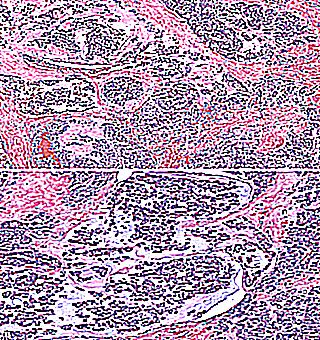Home >
Erectile Dysfunction >
Malignant tumors of prostate tissue
Malignant tumors of prostate tissue

Pathological heat of the prostate tissue today is considered to be one of the most common diseases today, which in most cases are fatal. The risk group for cancer incidence includes men in the age category over 67 years old, but as the world statistics on cancer pathologies show, this disease occurs even at 40 years old.
A malignant formation is formed from glandular tissue, genetically mutated glandular cells begin to mutate and multiply intensively, thus forming a tumor. The malignancy of such tumors is manifested in the ability to actively metastasize to the surrounding tissues and blood vessels, spreading throughout the body. In this case, the danger to a person is not the tumor itself, but metastases. Metastasis occurs both in the circulatory system and in the lymphatic system.
What stages of the oncological process exist?
Depending on the severity of the clinical symptoms of prostate lesion and the activity of the spread of metastasis, it is customary to distinguish four degrees of cancer:
Determination of the stage of the disease will allow the treating doctor to adequately assess the prognosis for further vital functions, and will help in choosing a method of therapeutic correction of this condition.
Species characteristics of prostate neoplasms
Depending on how pronounced the malignant process is, it is customary to distinguish the following types of tumors, highly differentiated and poorly differentiated.
Depending on what localization, processes distinguish the following types:
Etiological factors in the development of the disease
Today there are a huge number of theories of the development of prostate cancer among the male population of the planet, but it was not possible to reliably study the problem.
The modern medical society focuses on the main etiological factors that can activate oncological pathology:
- age-related changes in a man's body;
- a sharp change in hormonal levels;
- inappropriate nutrition, prolonged consumption of food carcinogens;
- the presence of cancer in the next of kin;
- unfavorable environmental conditions in the area where the man lives;
- chronic and often recurrent viral or bacterial prostatitis, without a course of treatment;
- employment in enterprises producing hazardous chemicals;
- long-term sedentary lifestyle.
What symptoms are typical for oncological neoplasms of prostate tissue?
Symptoms in malignant tumors begin to appear as a result of the rapid spread of the disease and progressive damage to the tissues of the gland and surrounding organs.
The most common symptom signs are:
- an increase in the number of urges to urinate throughout the day, the norm is within 8 times a day;
- obstruction of the outflow of urine through the urethral canal due to compression of the ureter by a malignant process;
- sensation of incomplete defecation of the bladder cavity, due to weakness of the muscle fibers of the perineum;
- a sharp decrease or complete absence of a man's sexual activity.
Basic methods of diagnosing the disease
The results of basic clinical trials are not enough to confirm the main diagnosis in oncology.
In order to diagnose prostate tumors, a number of specific diagnostic measures are carried out:
Methods of conducting therapeutic measures for oncological processes in the tissue of the prostate gland
To date, the methods of conducting cancer treatment with the help of conservative therapy have not yet been developed. Medication is mainly aimed at eliminating symptomatic signs and stopping the growth of tumor cells.
The following groups of drugs are used as drug therapy:
- non-steroidal anti-inflammatory drugs;
- narcotic and non-narcotic pain relievers;
- antibiotics;
- antispasmodics;
- diuretics;
- cytostatics;
- immunostimulants.
For cancer in men, the most qualitative treatment is considered to be surgical intervention, during which the affected tissue with areas of metastasis is completely eliminated.
Today there are a huge number of varieties of surgical intervention techniques, the most widely used are:
As a rule, before and after surgery, patients undergo conservative therapy, which is aimed at suspending the replicative activity of malignant cells.
To obtain a cytostatic effect from the conducted conservative treatment, the following instrumental techniques are used:
- Exposure to a tumor with radioactive radiation at a dosage maximum permissible for a person.
- Using laser radiation to destroy mutated DNA of tumor cells.
These methods are not used as radical therapy, but can prevent metastasis and recurrence of the disease.
The prognosis for recovery from neoplasms of the glandular tissue of the prostate is not favorable in 90% of cases, this is due to the fact that most patients seek qualified medical care in the later stages of the disease. Metastases spread throughout the body with great speed and affect vital organs, and this leads to death.



























